Singapore. Part Three. Life
Until now, we have only strolled around the business center of Singapore and found that it is one of the most modern cities in the world. Perhaps even the most modern.
Let’s see how things are on the outskirts of the city. Does Singapore live up to its reputation or is it merely hiding behind luxury?
Airport
Let’s start with the airport.

No, reader, the photo is not mistaken. This is Singapore’s airport. From the waiting hall, you can go out to the rooftop and take a walk in the sunflower garden. Through the glass, you can see the airplanes.

The Singaporean airport could be the subject of a separate lengthy story. It all starts with the terminal, where you choose how much time you have left until your flight: 1 hour, 2 hours, or more than 3 hours. When the terminal prints out an airport map for you, highlighting the attractions you can visit during that time, your jaw drops to the floor.
The author had only one hour, so it was possible to visit only a small part of one of the terminals. Here are the highlights.
The relaxation area near the sunflower garden. It’s not a VIP lounge. Any passenger can simply come in here and sit down.
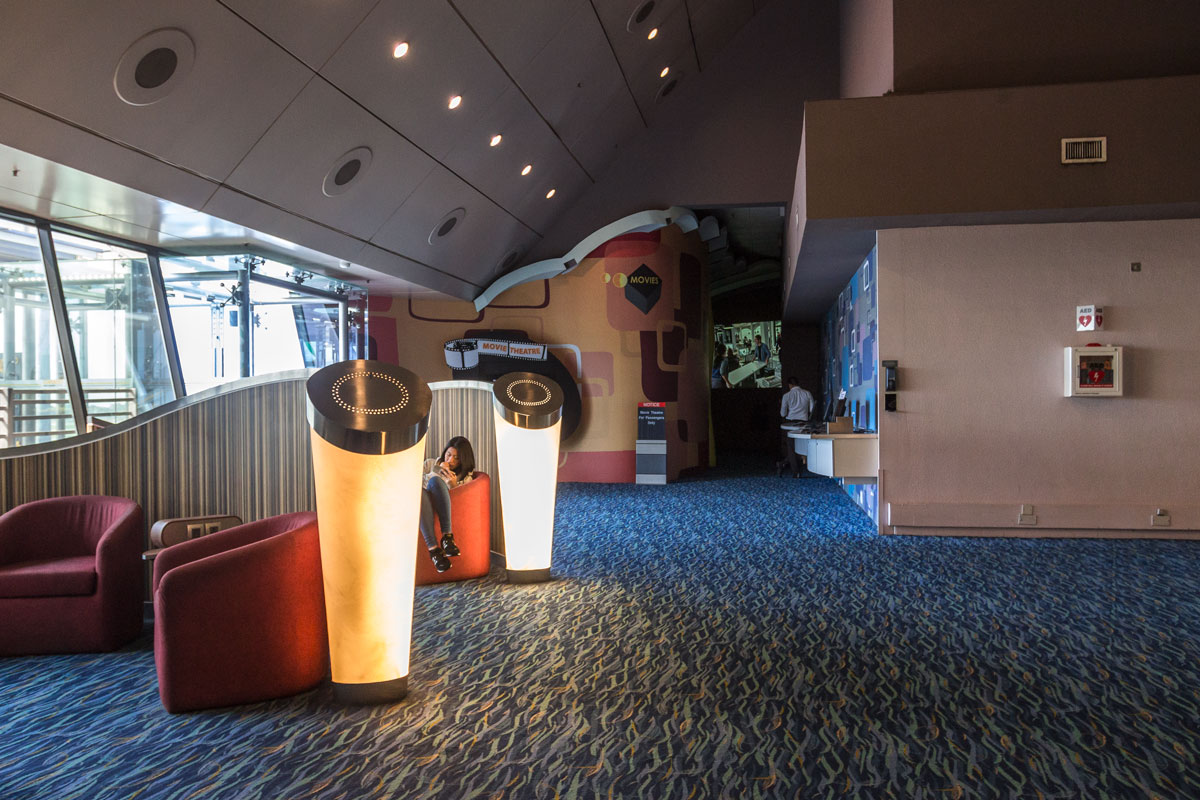
Free cinema. Anyone can come in and watch a movie. Not bad, right?

And here’s the gaming room.
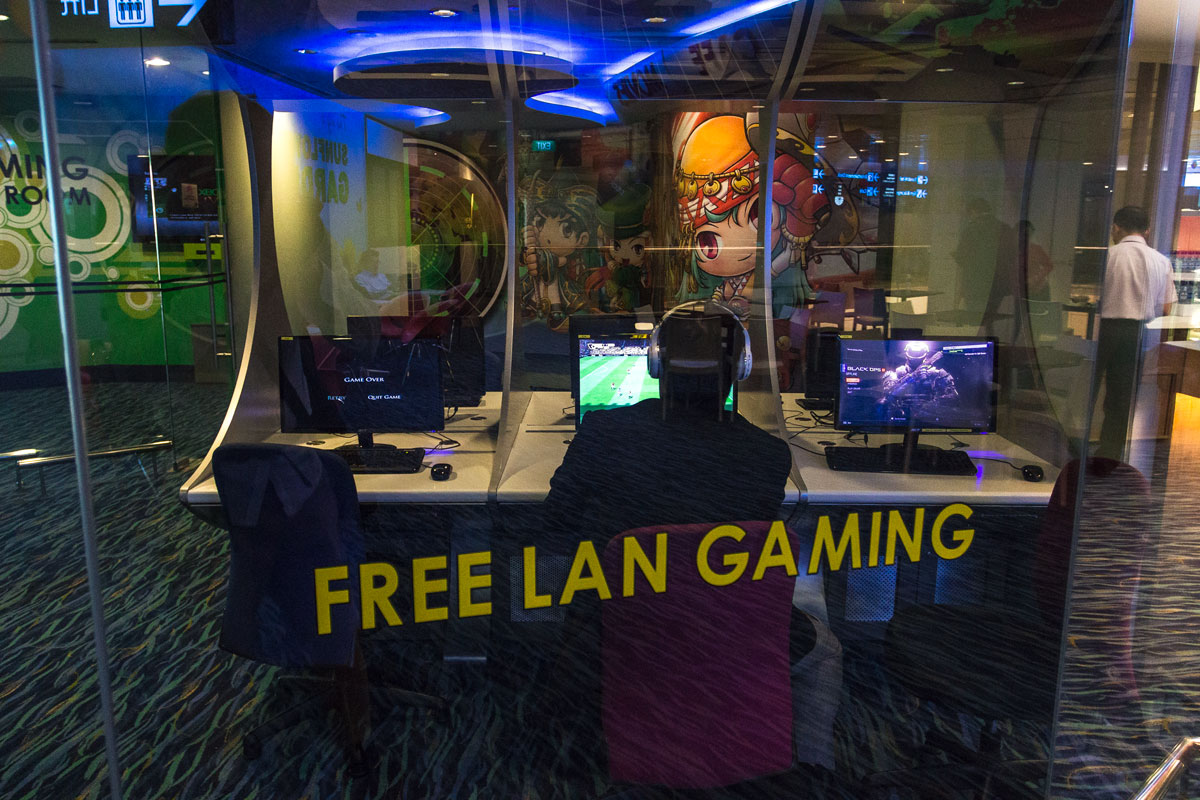
In this room, there are Xbox and PlayStation consoles connected to the internet. You can come in and play video games online. No, you don’t need to have a business-class ticket for this. Any person can simply come in and play.

And here’s the actual airport. This is the waiting hall.
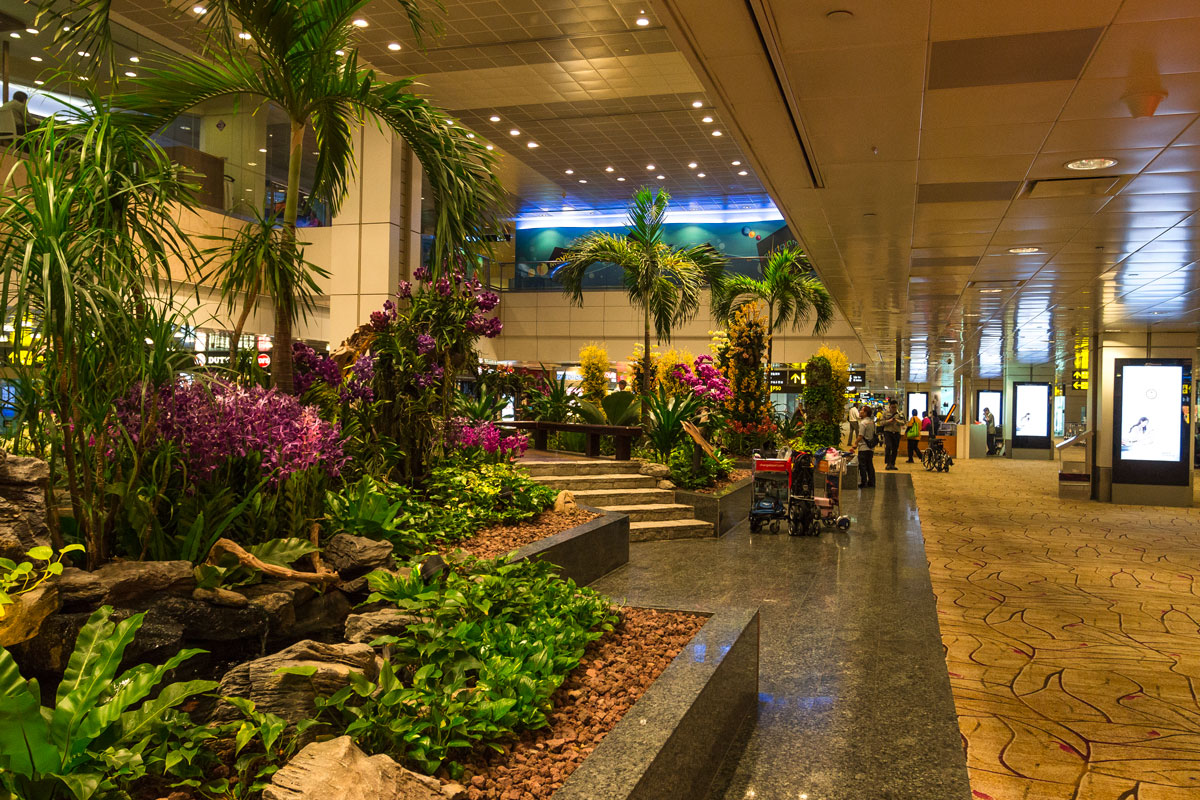
While waiting for your flight, you can sit by a small pond and watch the serene carp fish. It’s beautiful.
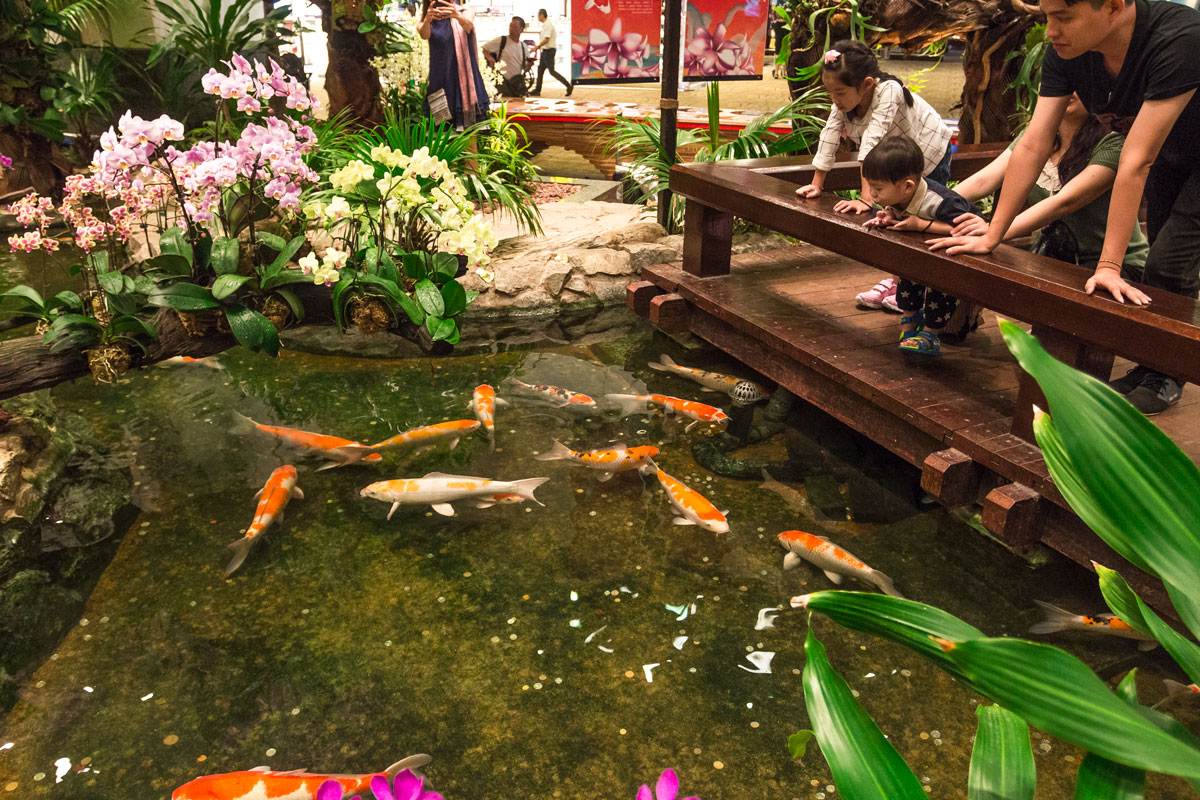
Children also have something to keep them occupied — there is a drawing table installed in the airport, with paper and colored crayons available.
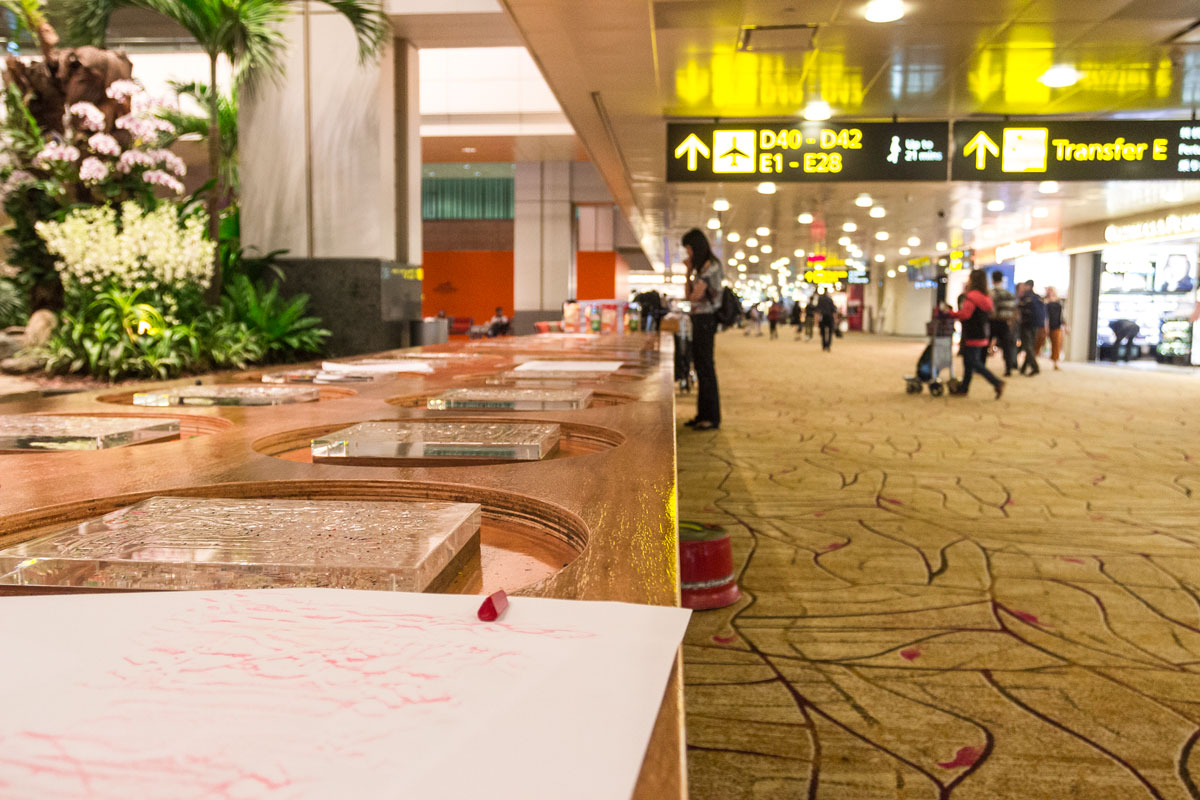
Changi Airport is the best airport in the world. In terms of accolades, it seems there are no equals. Humanity hasn’t come up with anything cooler yet.
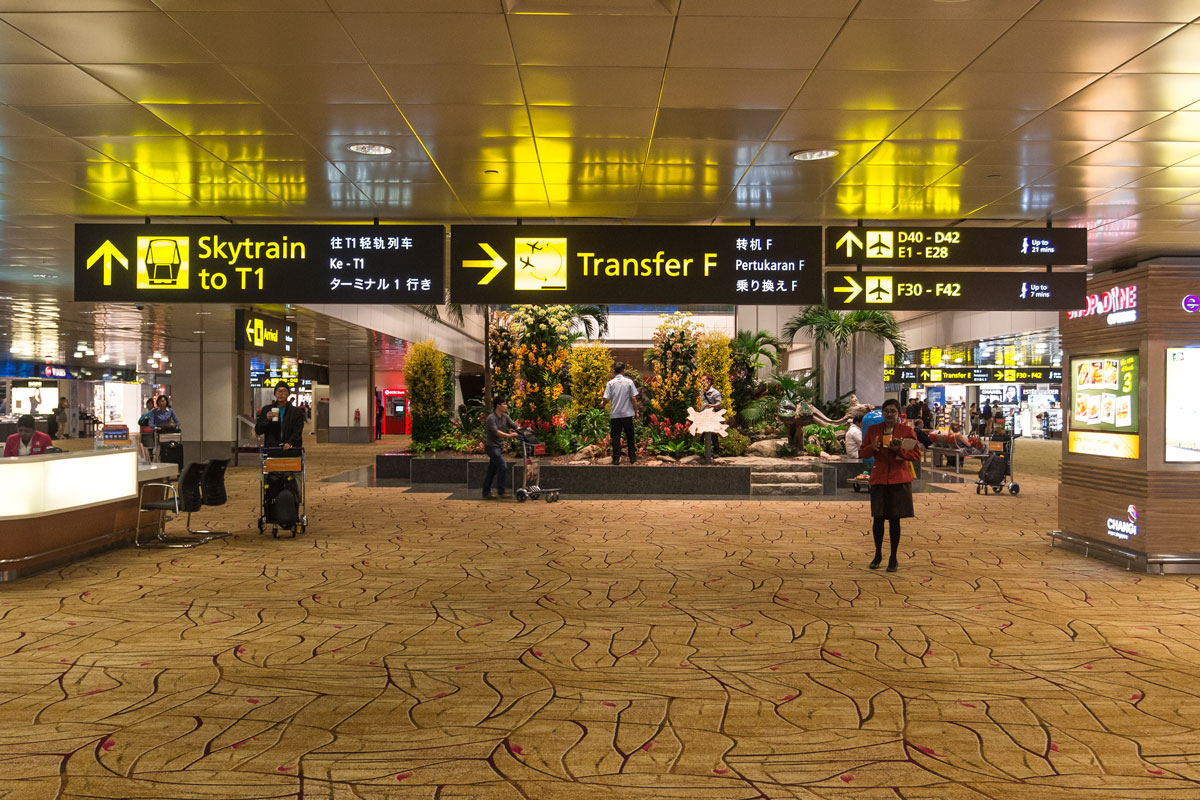
Well, what can you expect from a city with such an airport?
Old town center
Even the center of Singapore is not just made up of skyscrapers. Like many modern cities, Singapore can be loosely divided into ethnic neighborhoods: it has Muslim, Indian, and Chinese quarters.
The old parts of the city are in excellent condition, similar to Kuala Lumpur.
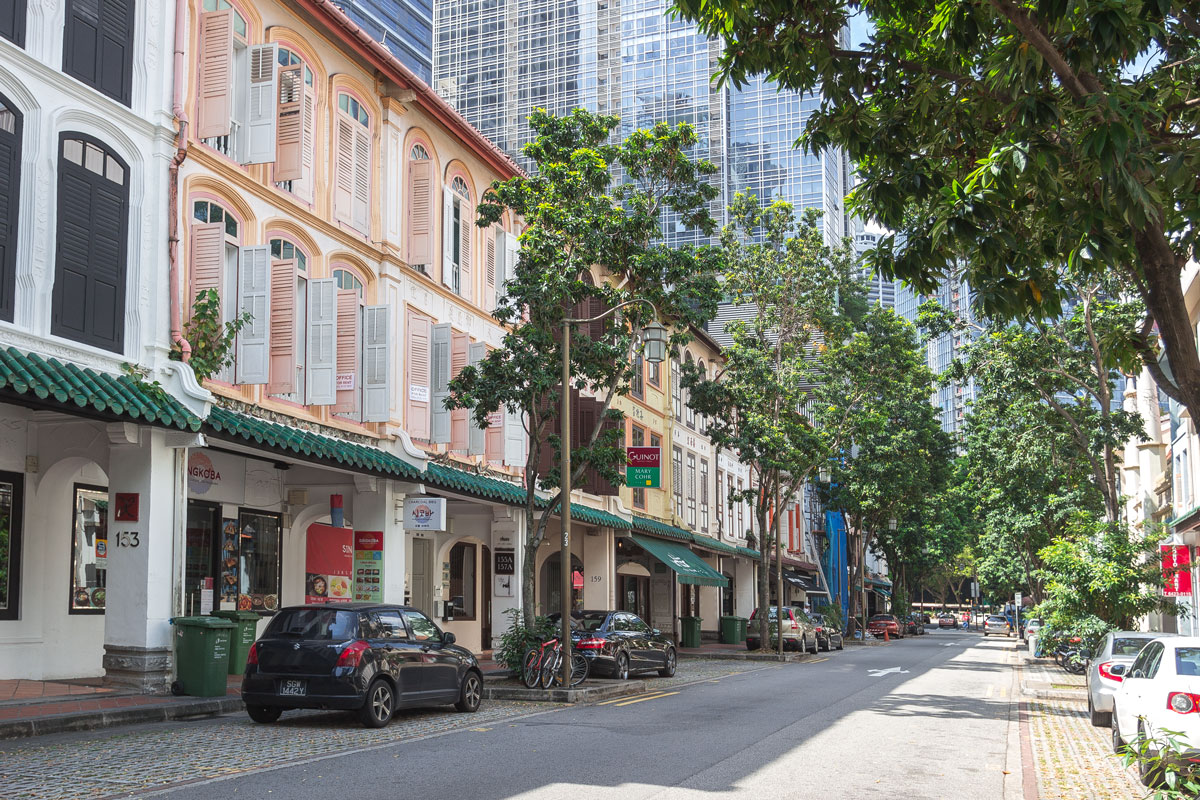
Colonial architecture.

Chinatown.

This Chinatown here feels polished, there’s no sense of China in it.

They say even the Indian quarters are clean. I couldn’t verify it as I got caught in the daily downpour. The rain in Singapore pours so heavily that you can’t distinguish the road beyond ten meters.

But when there’s no rain, from the observation deck of the Marina Bay Sands hotel, you can take a look at the rest of Singapore. The high-rise buildings stretch far beyond the horizon.

Let’s go and see how they construct public housing in the best city in the world?
Residential areas
What can I say? Panels are panels, even in Singapore. Residential areas never stand out with sophistication.
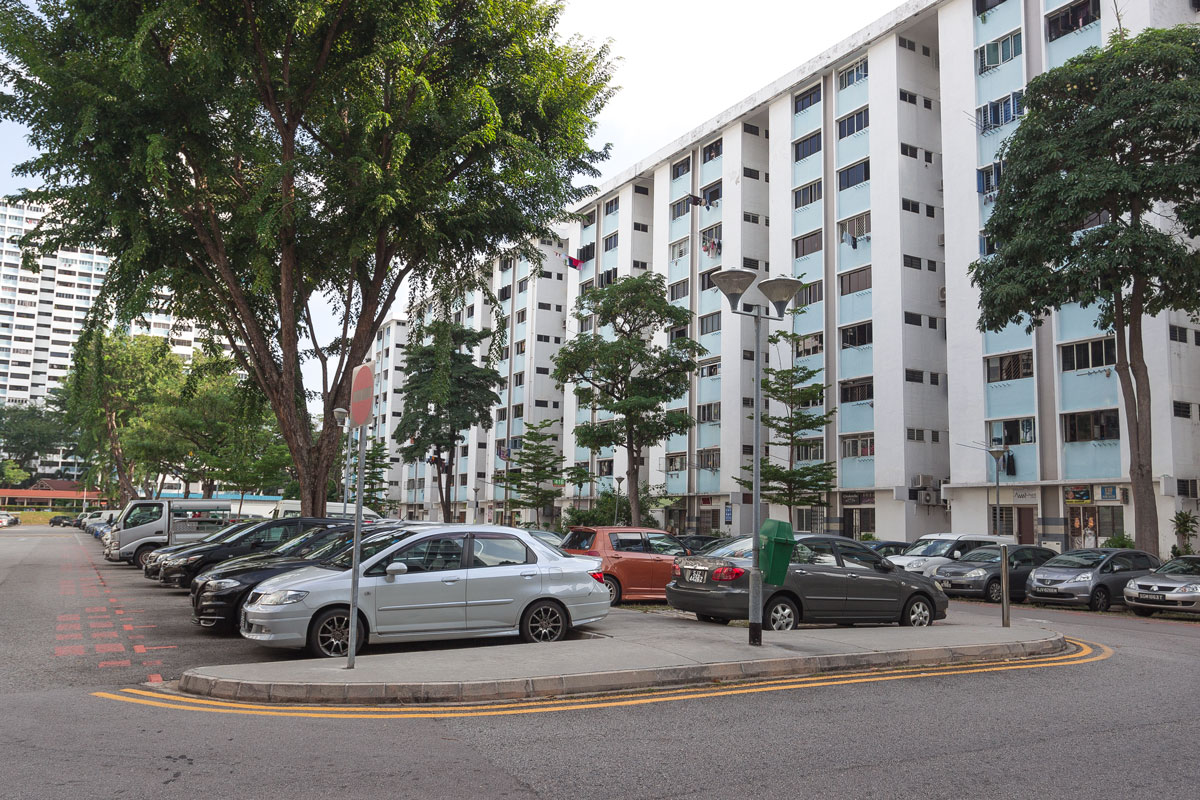
Of course, it’s not Russia. Even in the poorest district of Singapore, it is very clean. Next to a house, there is usually a narrow sidewalk paved with concrete slabs, followed by stormwater drainage and a small lawn that separates the sidewalk from the courtyard parking area.

The courtyards are densely filled. All parking spaces are paid and numbered, yet the entire courtyard is packed with cars.
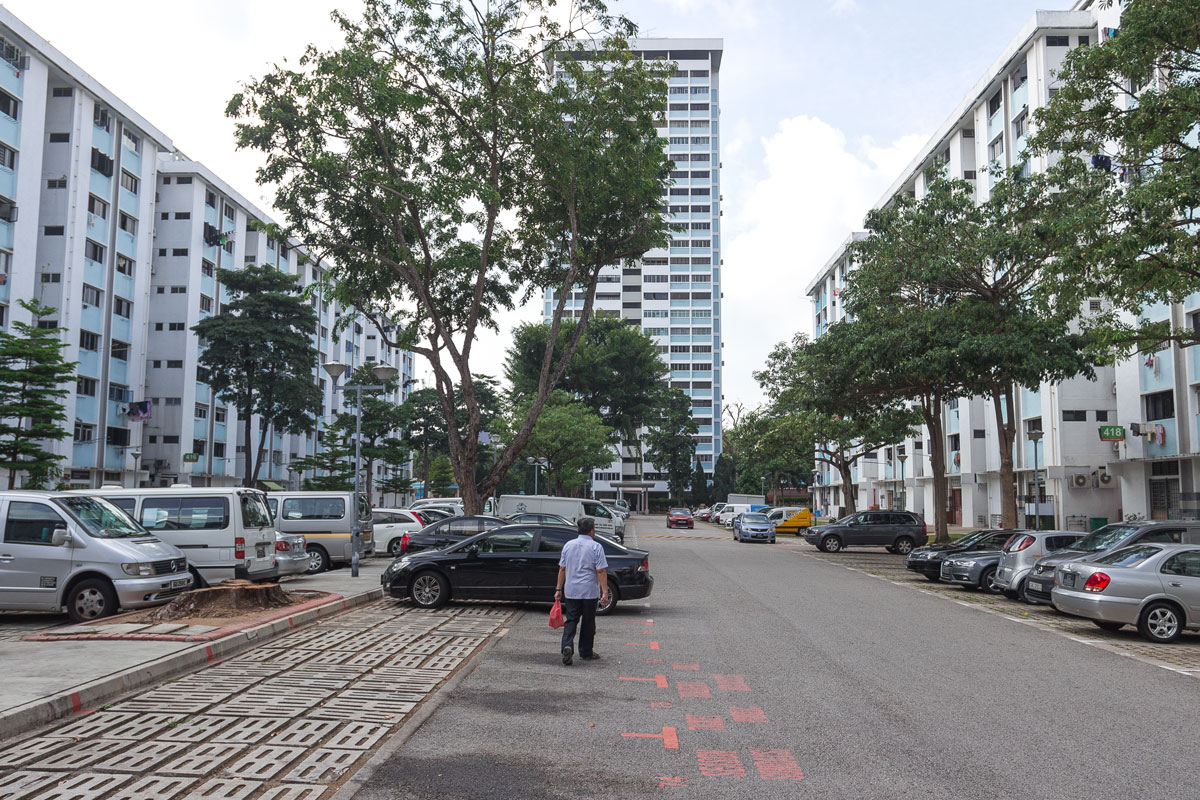
Each building is integrated with a large number of essential establishments: cafes, shops, hair salons, laundromats, florists, and auto repair shops. There’s something uncivilized about it, but it’s convenient.
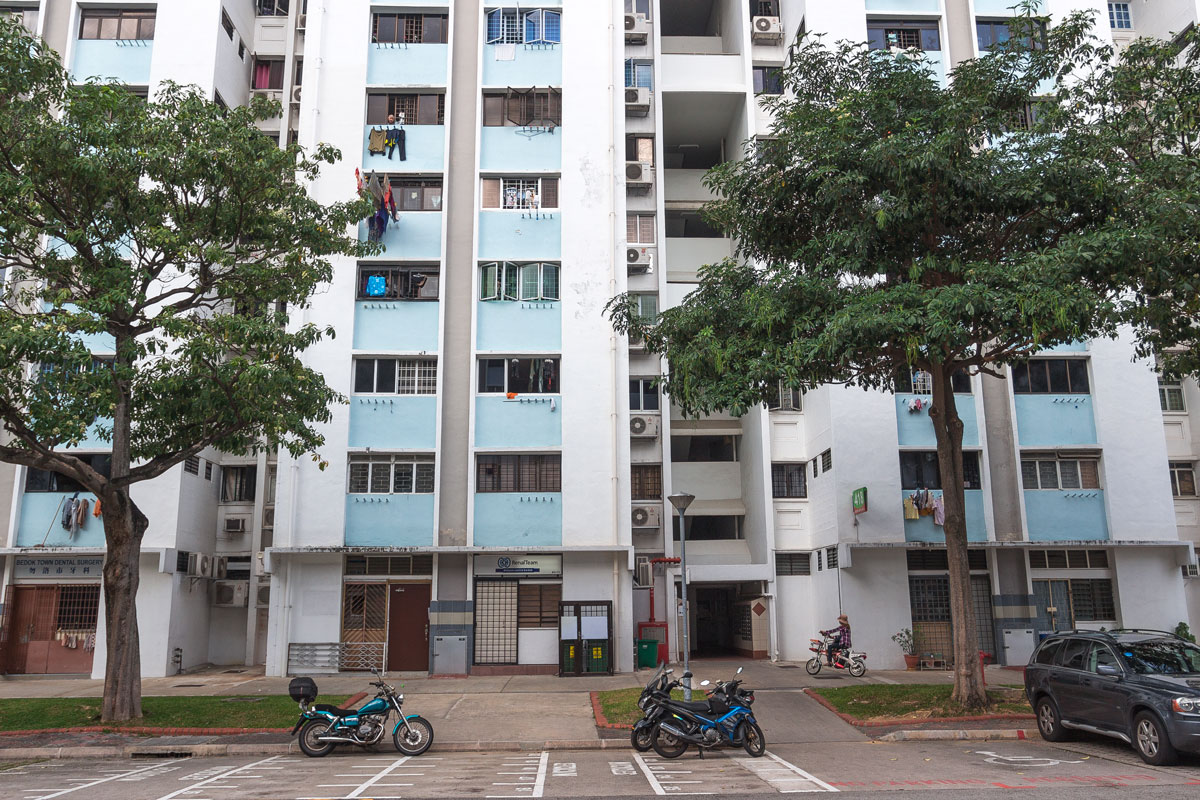
Entrance. On the ground floor, mailboxes are built into the wall. The elevator is very narrow but filled with numerous instructions, emergency service phone numbers, and a floor plan of the building. Direction signs indicating different apartments are hung on each floor, just like in office buildings.
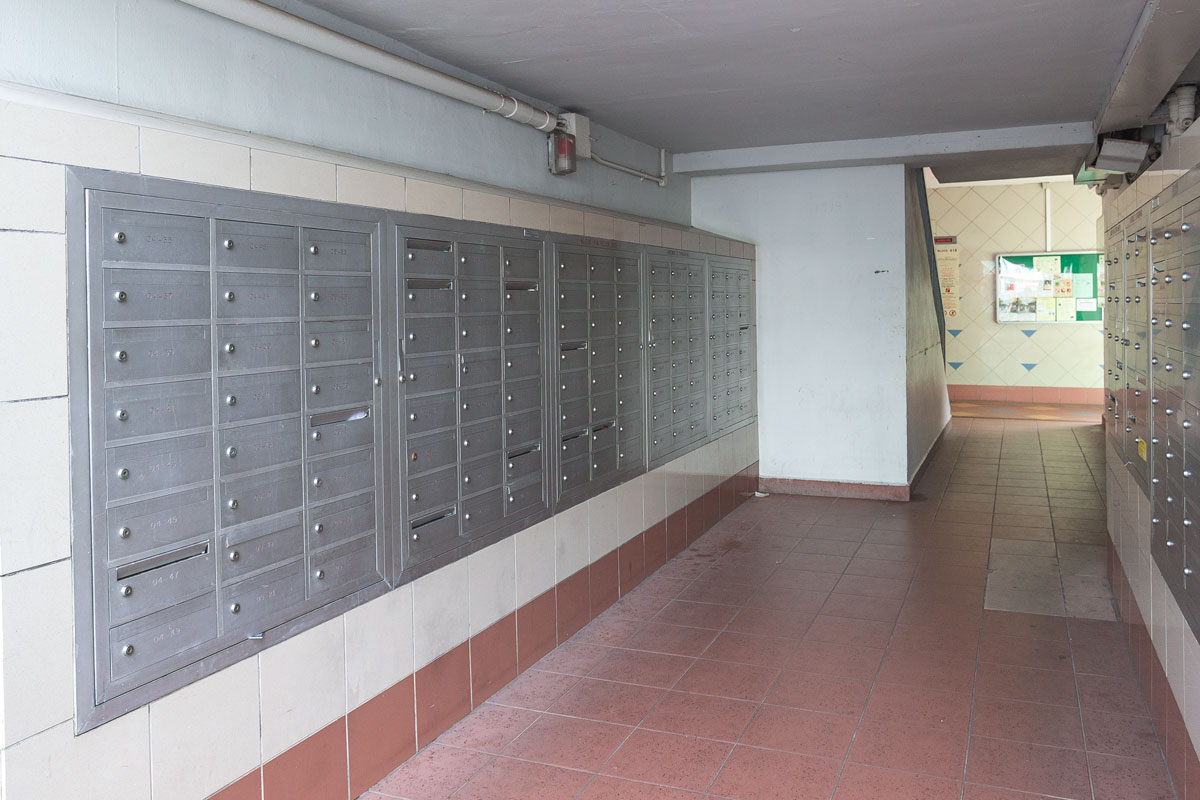
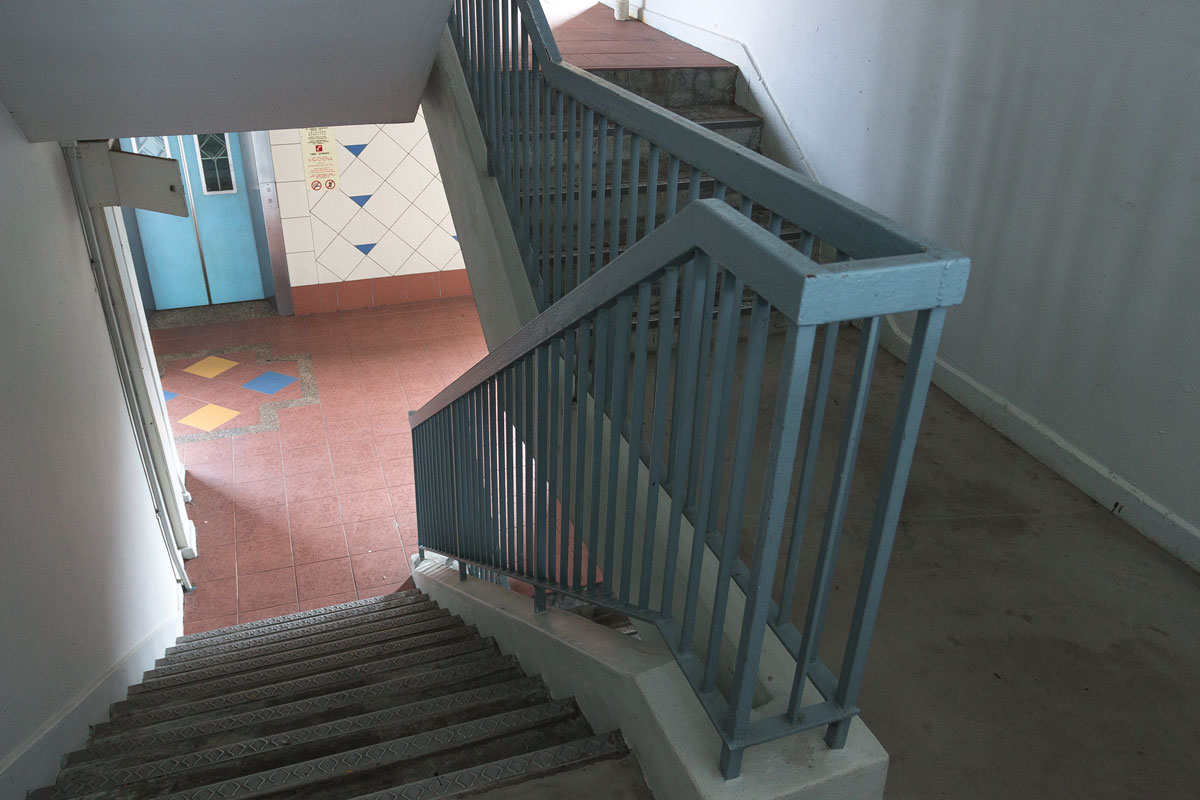
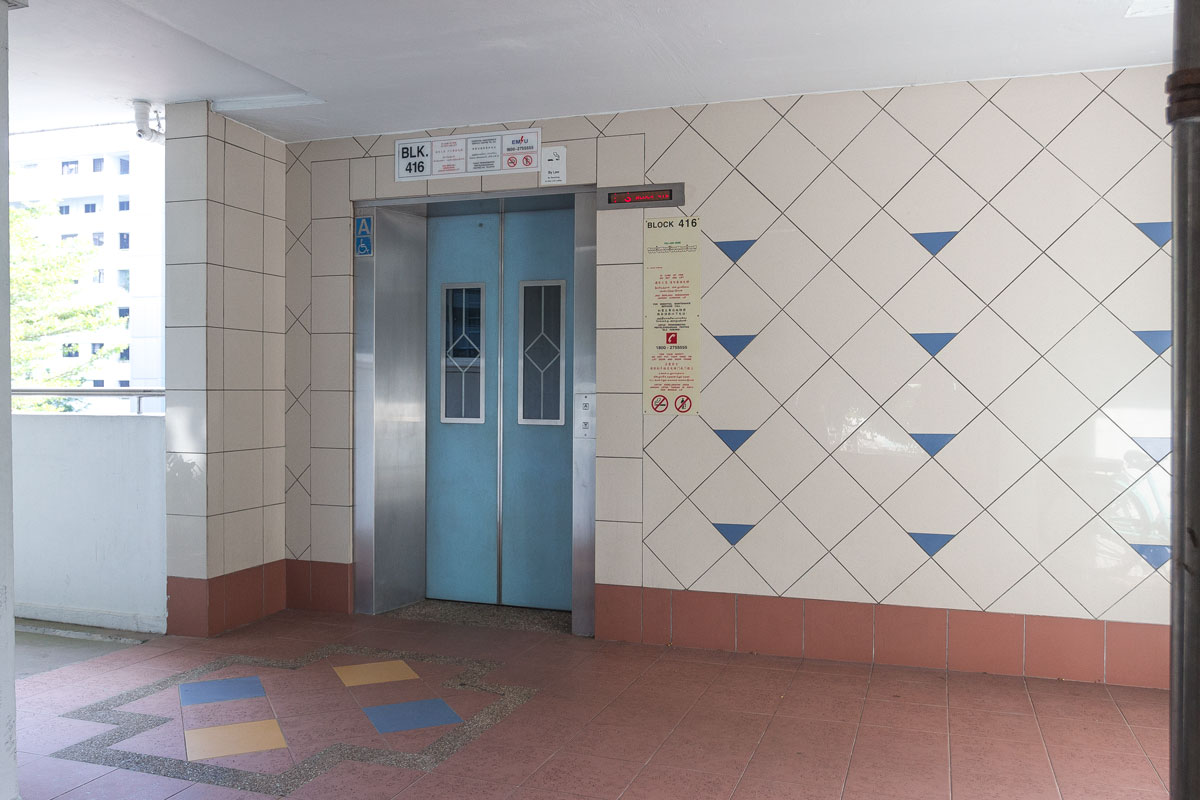

The apartments open onto a shared corridor-loggia, rather than a staircase landing.
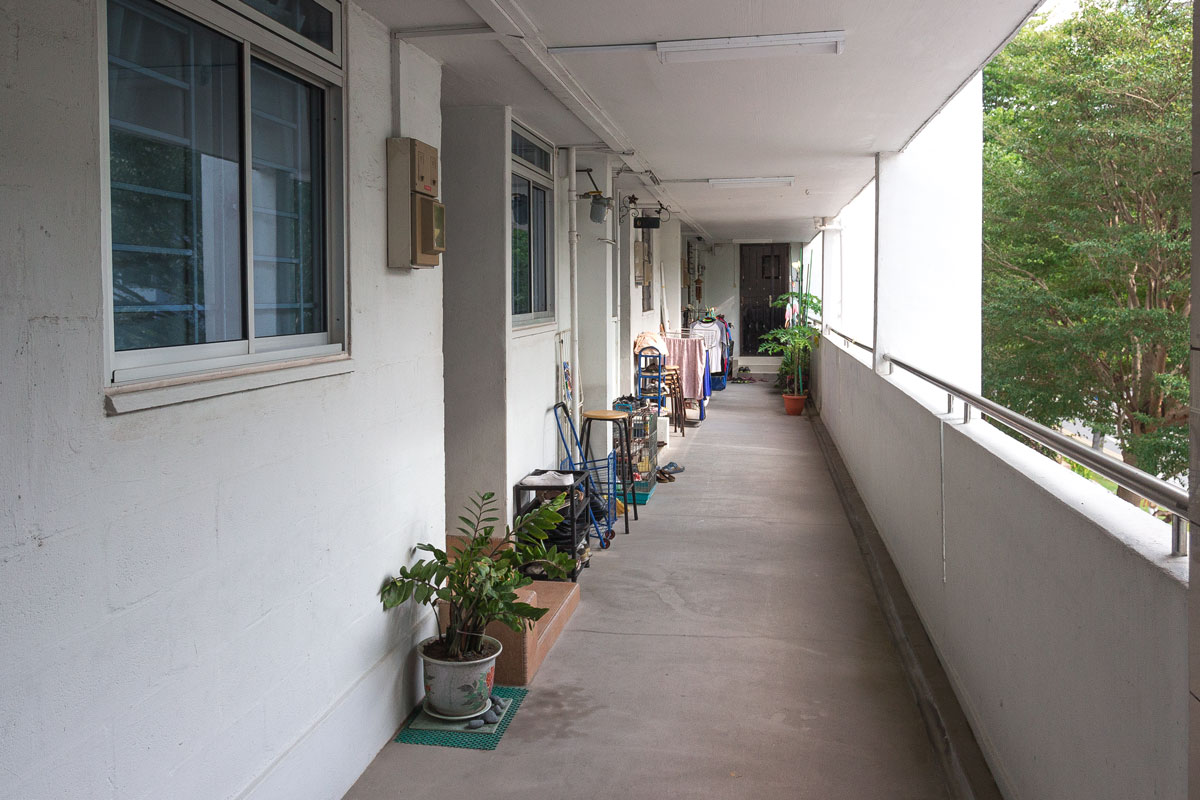
Another block of buildings. Laundry is drying on poles protruding from the balconies. The parking is located outside the courtyard, while the courtyard itself features a pleasant lawn and several trees. These houses are built on piles, and there are usually tables and chairs under the building where elevators also lead to.

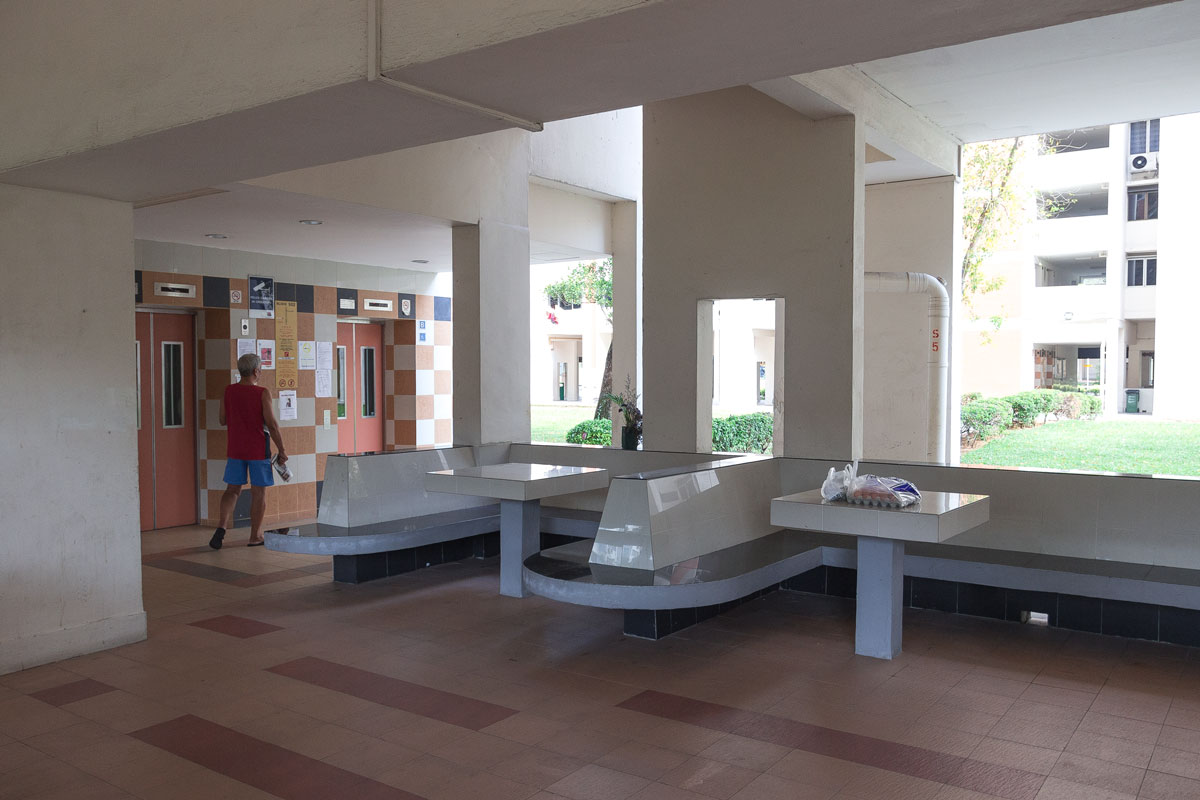
All these are Chinese residential districts. The poorest areas in the city.
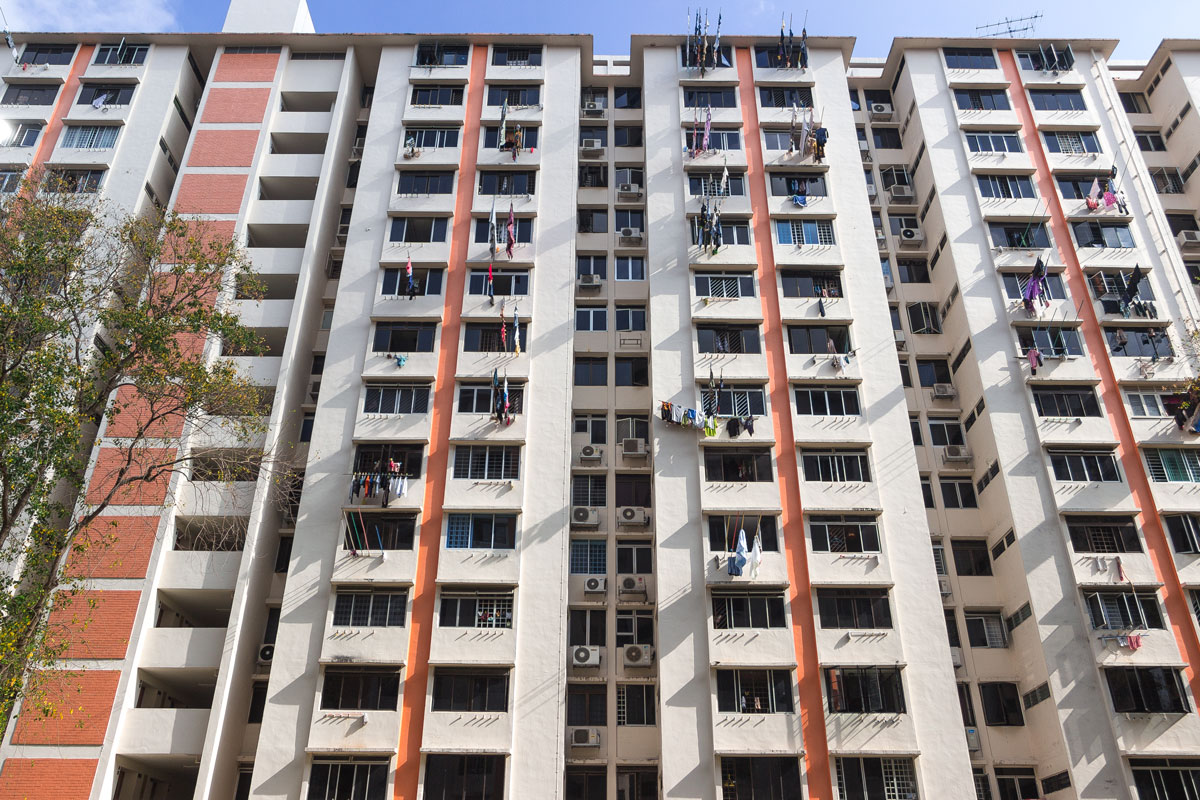

There are barrels in the courtyards. They are used for rituals: it is customary to burn money (often fake), letters, and small valuables in the barrels to pass them on to deceased relatives.


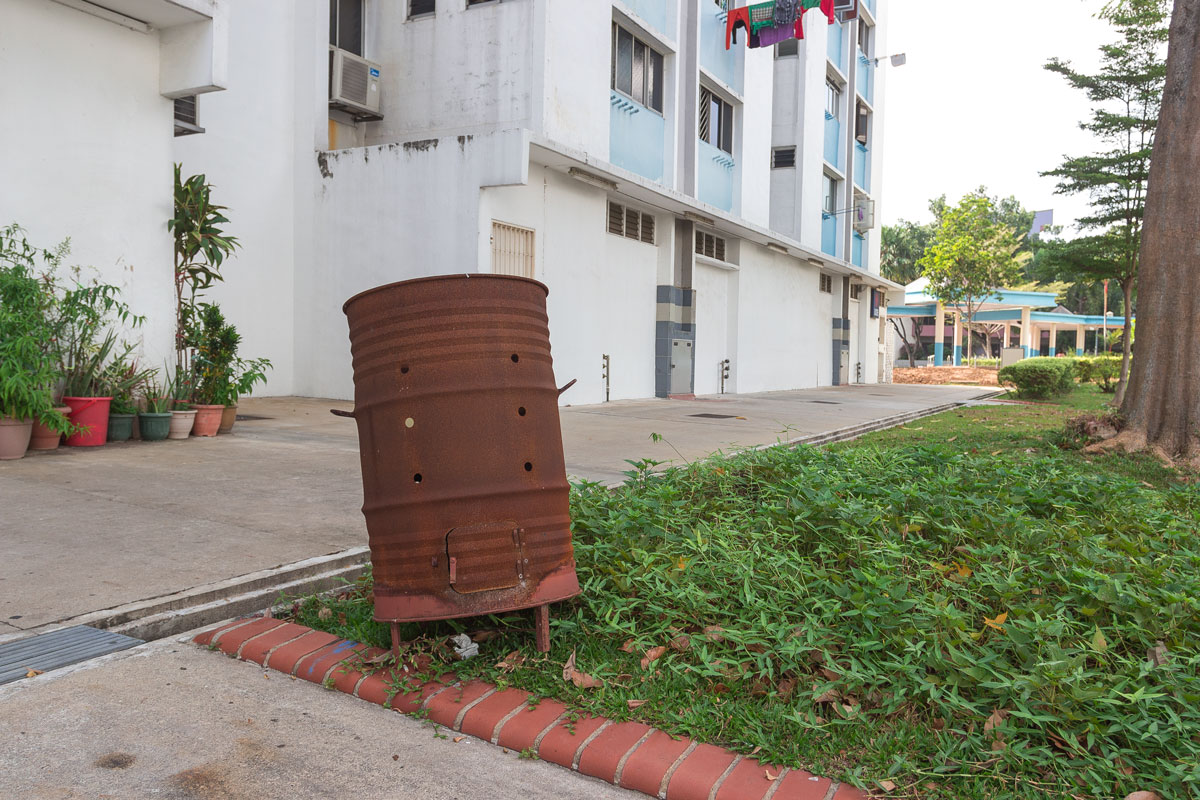
Warnings about bicycle thieves. Speaking of crime in Singapore: it is the lowest in the world, but still exists.


Of course, even in these poor “residential areas,” the infrastructure is top-notch. There are playgrounds for children, convenient ramps for disabled individuals, and rain canopies over the sidewalks — it’s beautiful!
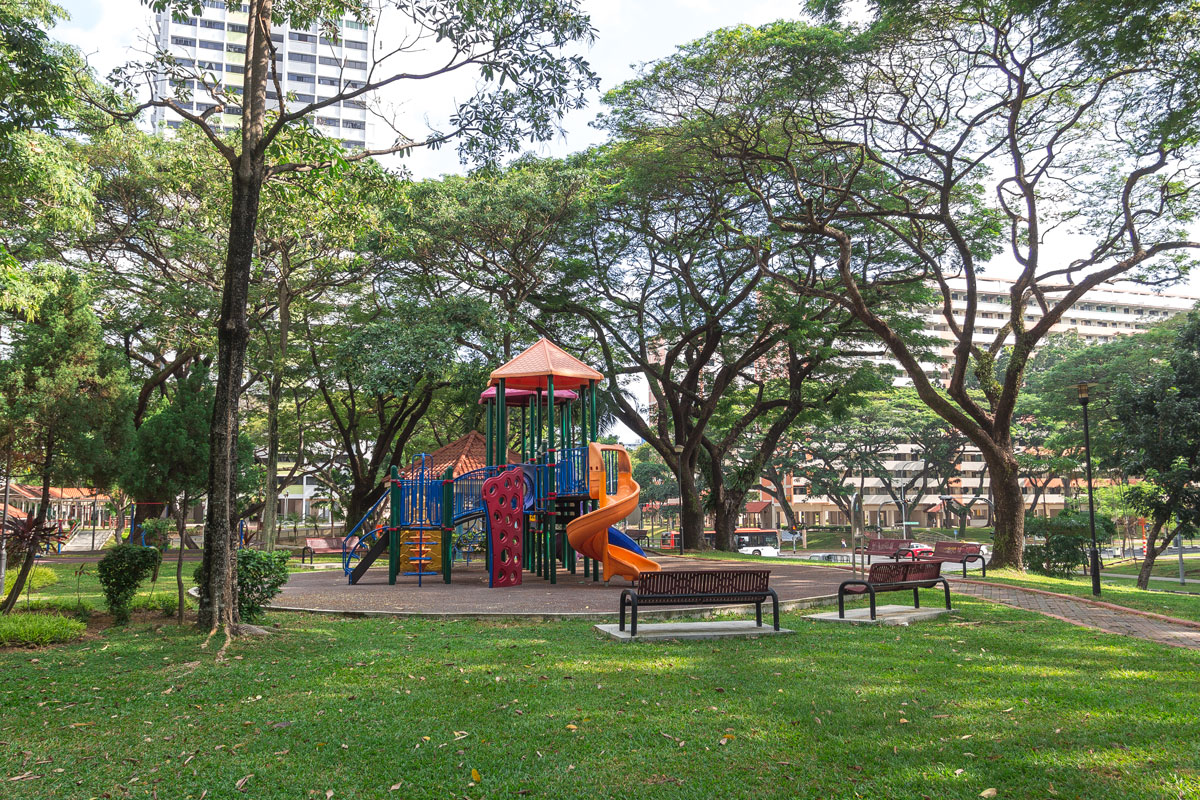
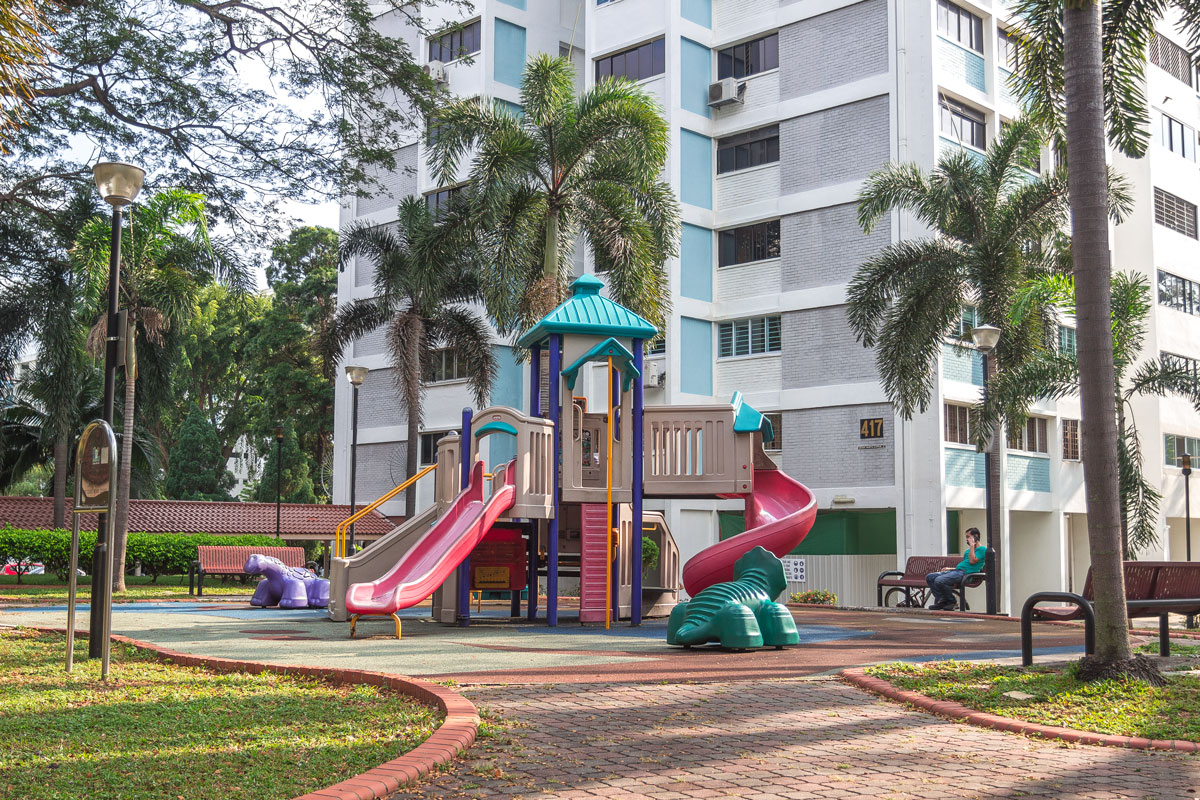
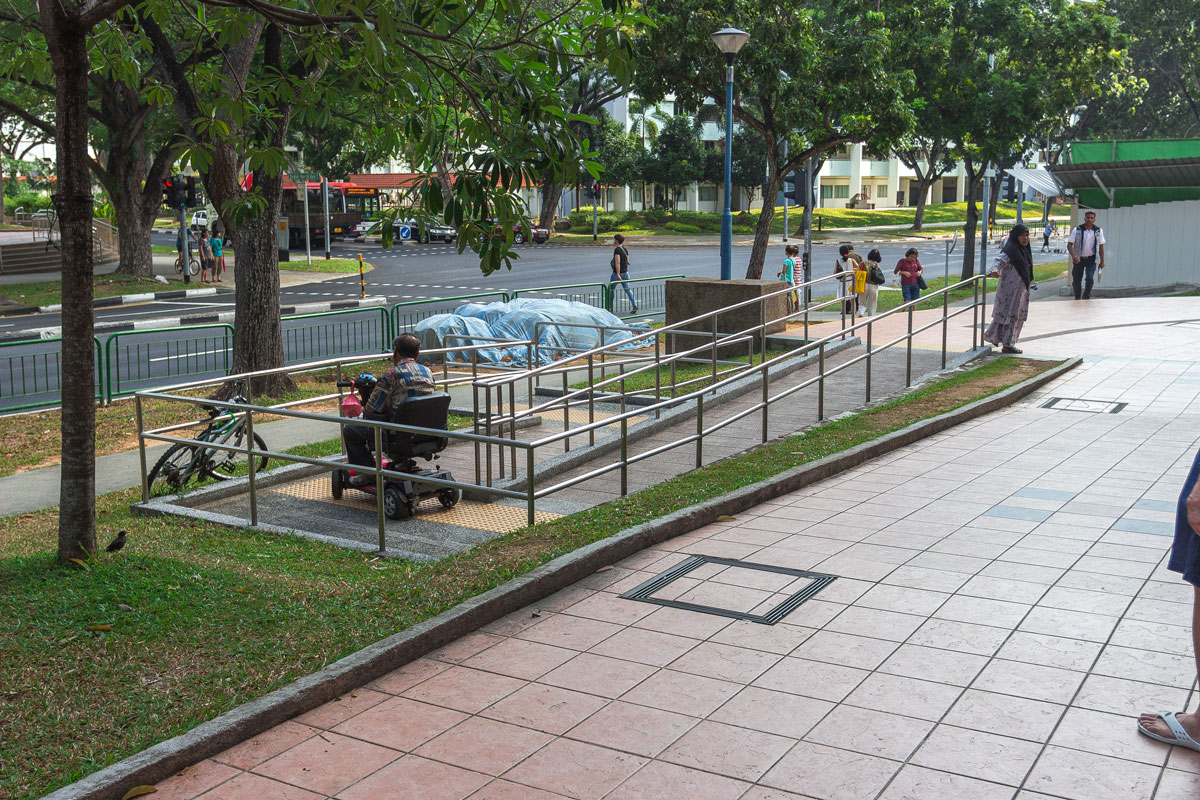
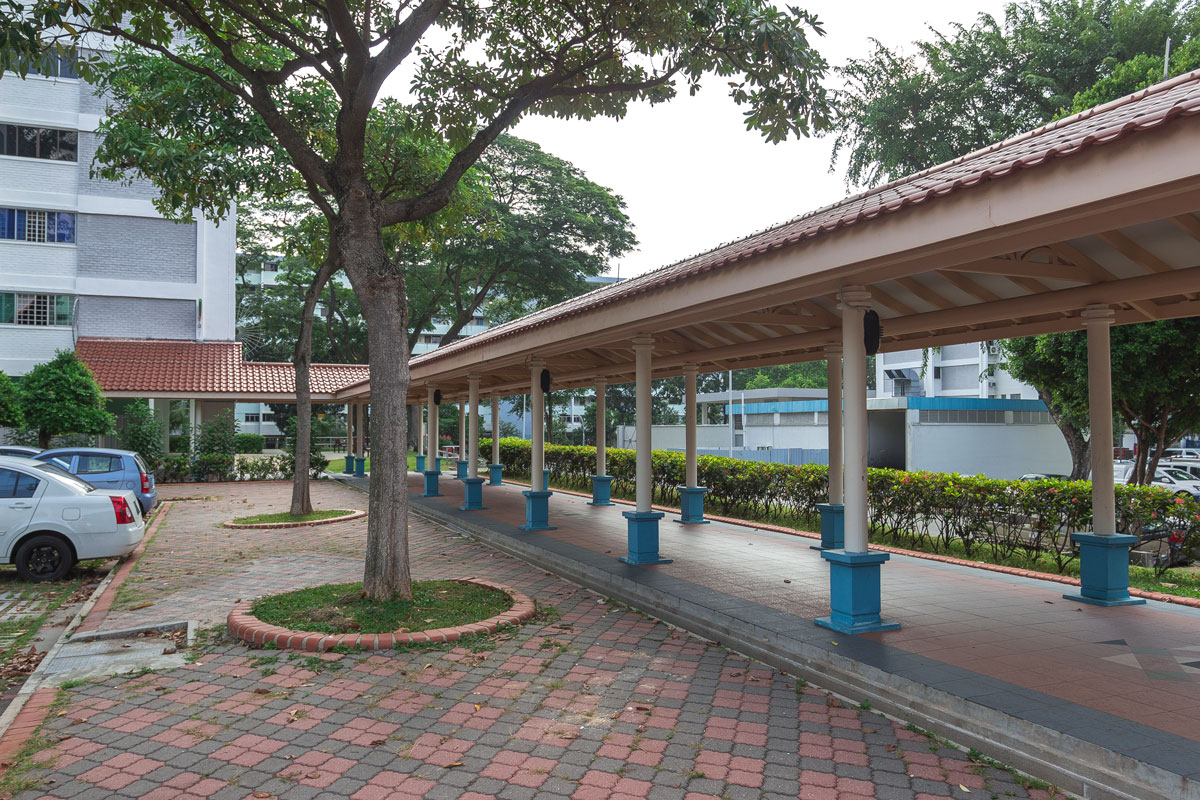
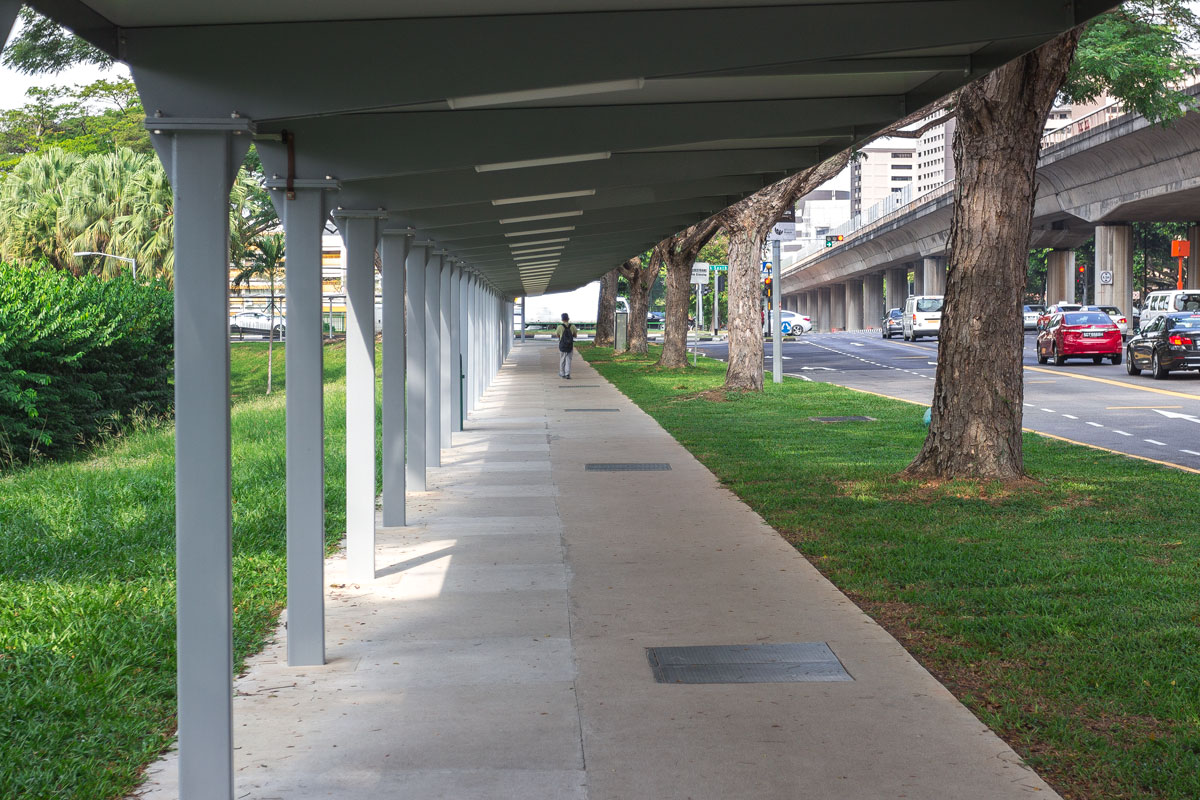
Prostitution
It turned out that the windows of my hotel, which I rented a few subway stations away from the city center, faced directly onto “aquariums” — that’s how public houses are called in Singapore.
An “aquarium” is a small private house, single-story, with a garage. The aquariums operate at night. A visitor comes here on foot or arrives by car directly into the garage, proceeds to the registration counter, and then enters the bedroom with the chosen sex worker.

Yes, to top it all off, prostitution is legalized in Singapore. And that’s a good thing because trying to combat it is utterly futile, and licensed sex workers undergo regular medical examinations, so the risk of contracting an illness here is minimal.
Of course, there are still criminal elements. Not everyone wishes to obtain a license. Transvestites mostly stand by the roadside (with ghastly faces, it must be noted). But these small houses are scattered along several dozen streets along Geylang Road.
During the day, it is empty here, and there is no one around. You can freely stroll and take photographs.
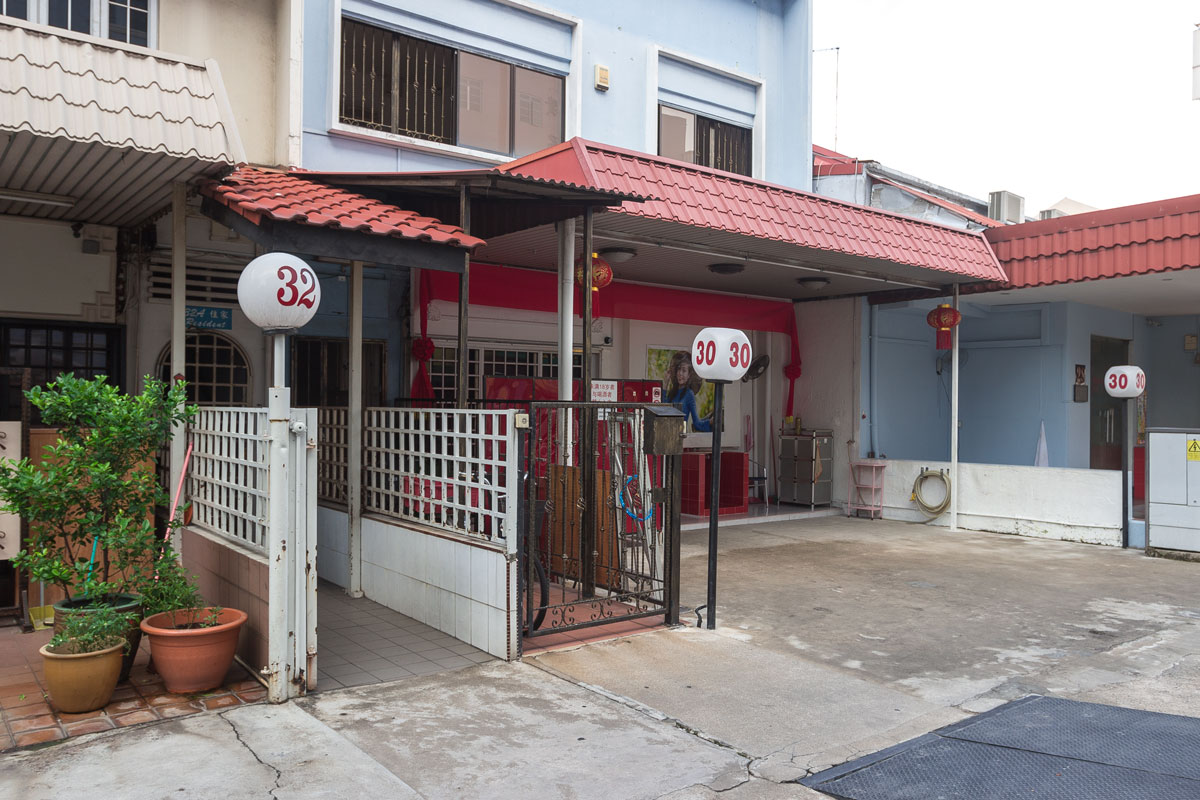

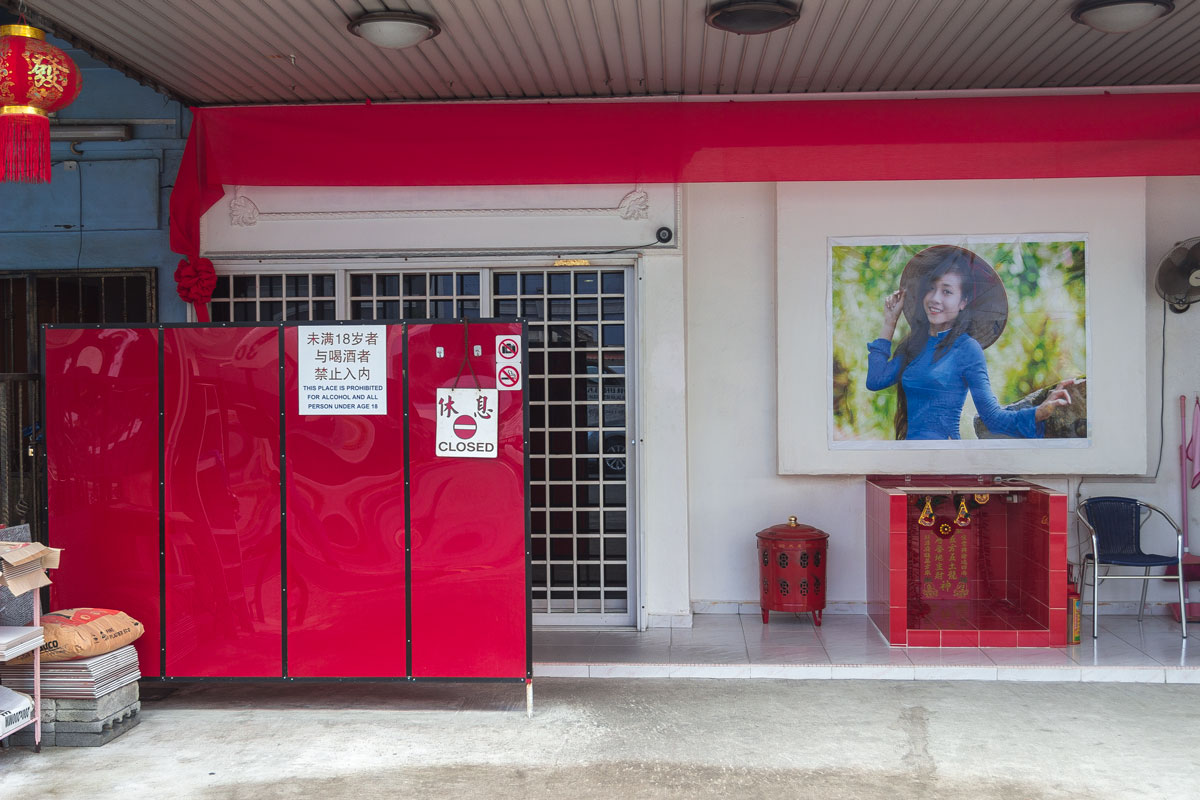
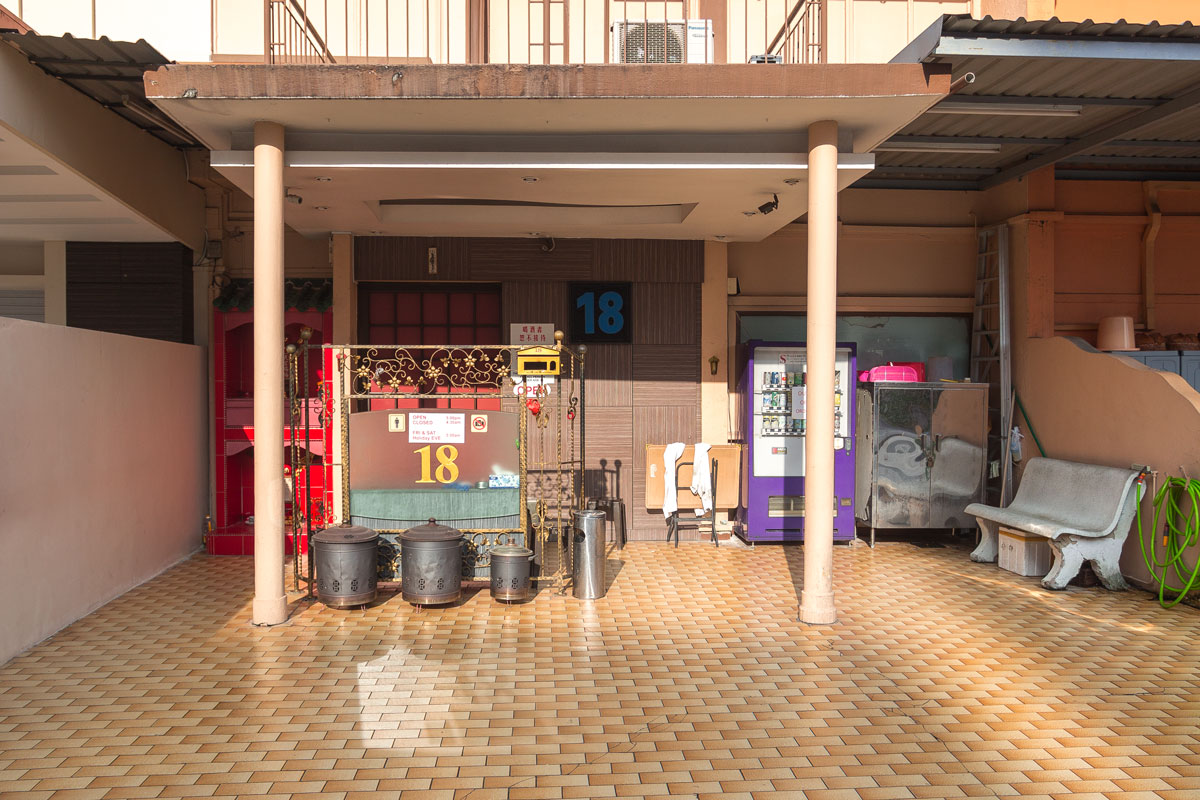
It’s somewhat scary to come here with a camera at night, especially when you don’t have extra money on hand. In general, each aquarium has pimps — ordinary Asian men dressed in casual attire. As you pass by these houses, they constantly beckon you, saying, “Hey, come in and relax! Or you done already?”
The services of prostitutes are not cheap. They charge 50 Singapore dollars for a hand massage, 75 dollars for oral sex, and starting from 100 dollars per hour for full intercourse. Of course, such money is reflected in the level of service. The client will be offered a shower, a choice of any girl, and very comfortable conditions.
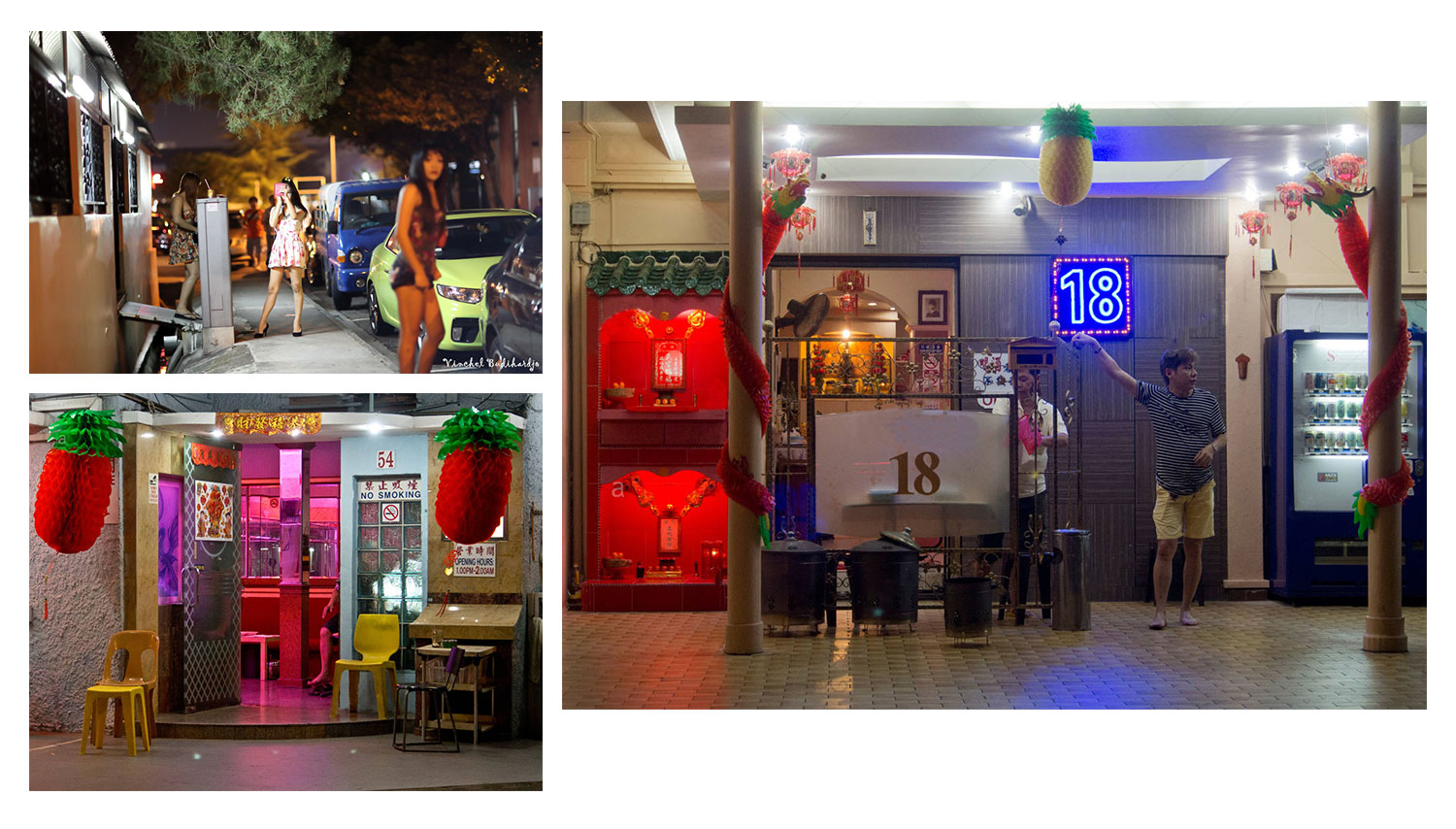
It is strange that despite legalized prostitution in Singapore, the strictest laws against any drugs are still in place. What is the logic behind it? Both issues have an identical mechanism, but one is reasonably addressed while the other carries prison sentences?
Even more strangely, despite all this, Singapore does not recognize gay individuals. It recognizes and even allows transgender individuals to marry, but it prosecutes homosexuals. Why? What went wrong in this supposedly progressive city? What is the logic behind it? I don’t understand.
One-story Singapore
Actually, there are not many streets with public houses and grey panel buildings in Singapore, and they are inhabited by the poorer segments of the population, mostly migrants from China. The native Singaporeans themselves live in very cozy and beautiful private houses.
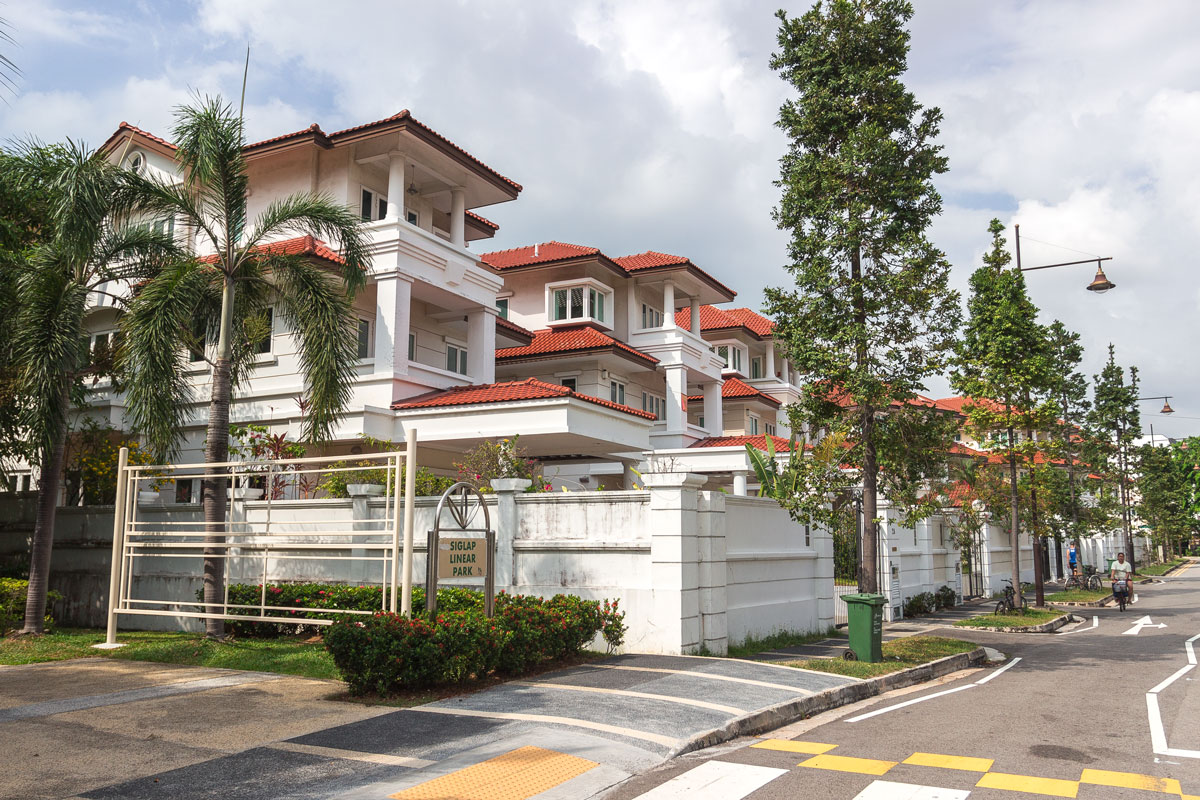
Perhaps not everyone lives so luxuriously, but cleanliness is definitely a common aspect for all.

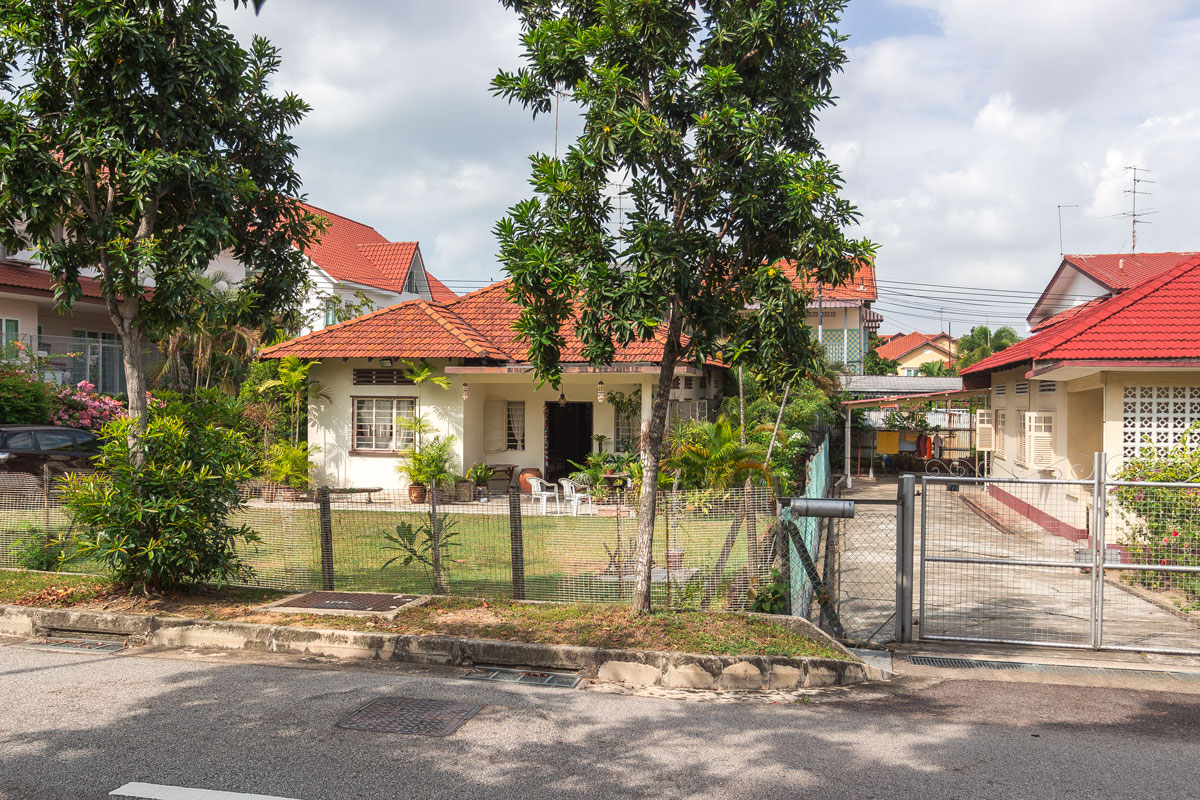
It is somewhat reminiscent of Japan. It is equally quiet, and cicadas are chirping as well.
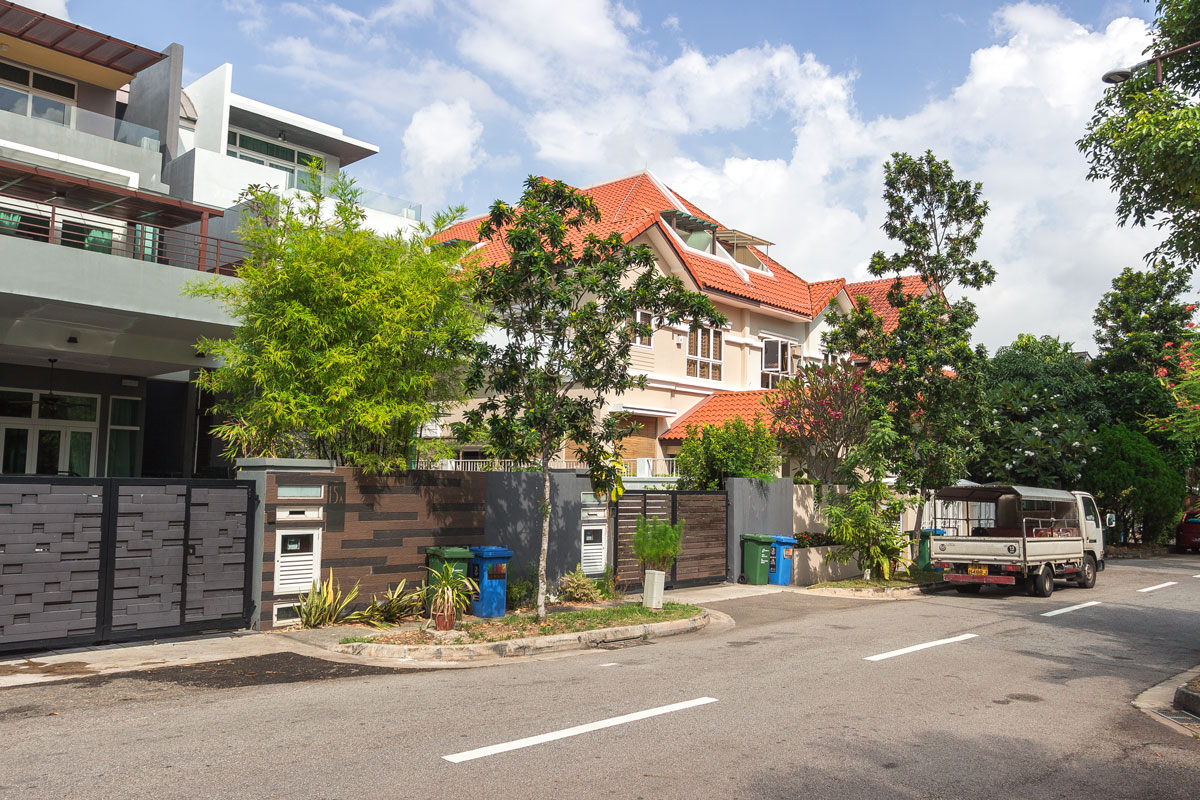
Streets.

Quiet, illuminated.
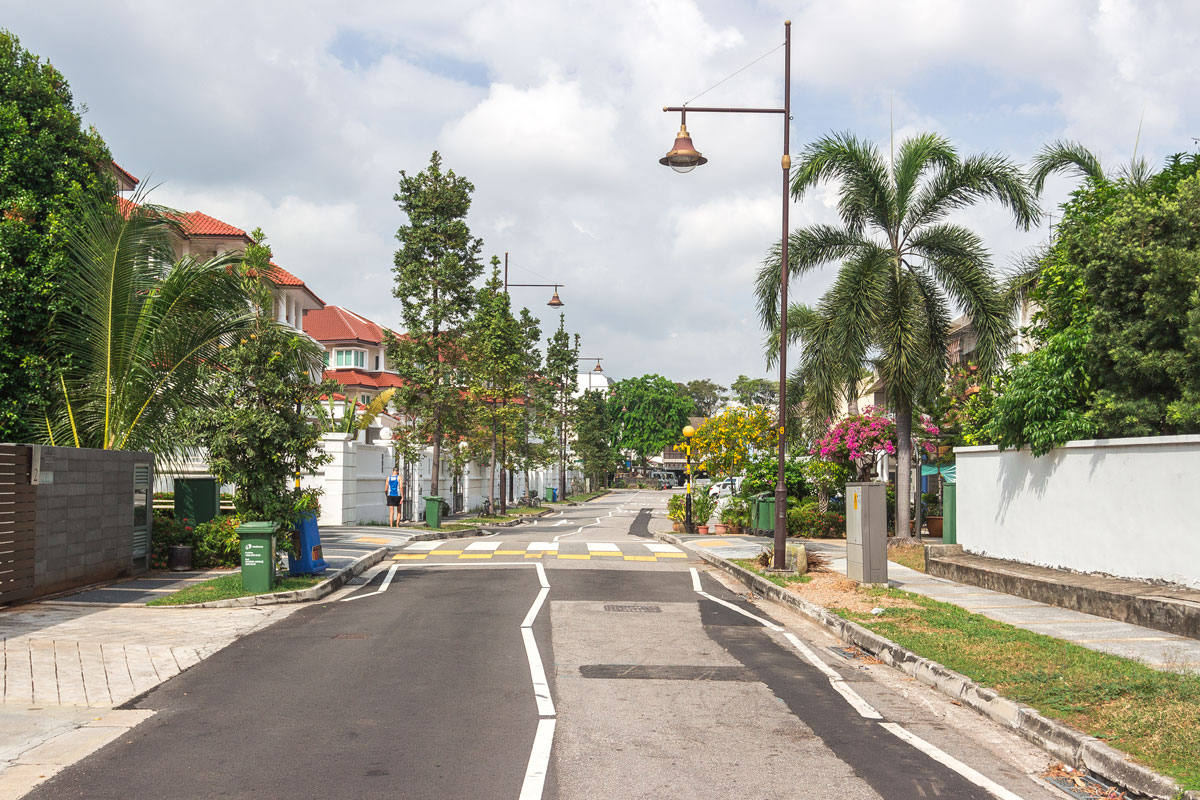
School.

Sports field.

A wonderful sign saying not making noise at night.

Do you have noise at night? In Singapore, it’s quiet!


